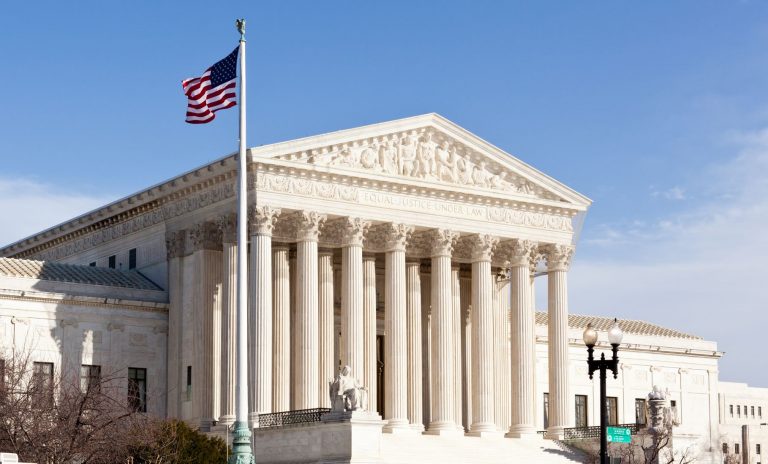Hurricanes, Wildfires And Floods, Oh My!, In HR.com
Hurricanes, Wildfires And Floods, Oh My!, In HR.com
How to put emergency action plans in place for dealing with natural disasters and other emergencies
In the wake of record-breaking temperatures, widespread wildfires, 100-year flooding and other natural disasters, especially following a worldwide pandemic, employers are faced with a changing landscape of managing employees.
Many of these natural disasters are occurring in geographic areas that rarely had to deal with such issues. As of the writing of this article, according to fireweatheravalalanche.org., nineteen states have had wildfires burning. Kentucky, this time eastern Kentucky, is experiencing deadly flooding and hurricane season is in effect.
Importantly, the personal and widespread impact of the disasters forces employers to consider all aspects of the employment relationship. How and when to discipline employees; consider whether existing policies and procedures are flexible enough to allow employers to walk the fine line between being humanistic and caring while running the business.
What’s a reasonable employer to do? Let’s look at what one did. Looking back to the late hours of December 10, 2021, an EF4 tornado roared through Mayfield, Kentucky, causing catastrophic damage. One large building, in particular, used as a candle factory by Mayfield Consumer Products, was almost completely leveled. Shockingly, it was discovered that dozens of employees were working a late shift at the facility when the tornado hit. Many of them were injured, and nine employees lost their lives.
In the aftermath of the devastation, some of the survivors claimed that they wanted to leave the factory before the tornado hit but were threatened with termination if they did so. A federal court lawsuit brought by employees is currently pending in the Western District of Kentucky.
This is a cautionary tale for employers anywhere; now is the perfect time to take a step back and determine how to put emergency action plans in place for dealing with natural disasters and other emergencies.
Employee Safety
Employers are responsible for protecting employees from unreasonable danger in the workplace. This does not mean that places of employment are required to shut down for every thunderstorm, and some employers may never be able to close (like hospitals and law enforcement agencies). But every employer should take the time to identify reasonably foreseeable emergencies, including natural disasters, and then figure out how to keep employees safe in the event of such emergencies.
For example, procedures to be followed if an evacuation is necessary due to fire or flooding, and identification of a safe room for employees to report to in the event of a tornado or severe storm. Do not be afraid to exercise a little humanity. Employees are mothers, fathers, children, neighbors and caretakers of many sorts. Do you want to be “that employer” that refused to allow employees to leave to take care of a loved one? Think about allowing employees to leave voluntarily and understand that business operations will continue.
As will be discussed later, there is no obligation to pay non-exempt employees if they do not perform any work, but why not implement a special paid emergency leave program that is only used in the time of a national disaster? This leave can only be used when there is a declared state of emergency or official disaster warning. Employees either receive the leave if they voluntarily leave or for example, receive double the amount of leave if they stay. If they are at home, stay at home. No emergency leave is available, but employees can take PTO during this period if travel is dangerous, and operations have ceased at the workplace. There is no penalty for taking the leave. For employees that elect to remain working, make special provisions for their stay.
OSHA defines a workplace emergency as a natural or man-made “situation that threatens workers, customers, or the public; disrupts or shuts down operations; or causes physical or environmental damage.” A good resource for employers is a booklet titled How to Plan for Workplace Emergencies and Evacuations published by OSHA and the U.S. Department of Labor.
Communication with Employees
In the event of an emergency, employees will need to know what to do: When they should act, where they should go, what they should take with them, and whether there are any company closures. Employers should have a system in place to keep employees informed of impending natural disasters, especially in light of the sometimes fast-approaching changes in weather and safety challenges and employer access to social media and cell telephone policies.
In the midst of chaos is no time to think “how do we let everyone know what’s happening?” Thus, a procedure for communicating information to employees is a key component of an emergency action plan. Current contact information for the employees should be maintained and routinely updated. The employer should take the initiative to verify contact information rather than requiring the employee to take the initiative.
For example, employees cannot access electronic W-2 forms without confirming contact information. Some employers implement a communication tree, where a few employees are designated to each call a list of people, each of those then call another list of people, and so on until everyone has been contacted.
Other employers maintain a call-in number to use during emergencies, which plays a recorded message or utilizes a group text message. Whatever procedure the employer chooses, someone should be placed in charge of ensuring that it is followed and that all employees have been contacted. Take full advantage of technology to keep employees informed.
Employee Compensation
The Fair Labor Standards Act requires employers to pay non-exempt employees only for hours actually worked, regardless of whether the reason for not working is the result of a decision made by the employer or employee. For example, if the employer decides to close the workplace and sends employees home in preparation for a potential natural disaster, there is no obligation to pay non-exempt employees for any time that they are not actually working after the closure.
There are potential exceptions for waiting time or on-call time, like if the power is out at the workplace but the employees are required to stick around in case it comes back on, and for nonexempt employees who receive fixed salaries for fluctuating workweeks. Keep in mind, the employer may allow employees to take leave for the periods when they are not working due to natural disasters.
As for exempt employees, if there is any work performed during the work-week, the employer must then provide the exempt employee their full weekly salary. Therefore, if a workplace is closed due to a natural disaster or other emergencies for less than a full workweek, the employer will be required to pay the full salaries of the exempt employees for the week. Closures of an entire week, where the exempt employees do not perform any work during that week, do not require payment.
If the exempt employees are ready, willing and able to work, the FLSA prohibits the employer from making deductions in pay due to operational or other reasons. According to the Department of Labor, employers can substitute or reduce an exempt employee’s accrued leave (or run a negative leave balance) for the time an employee is absent from work, even if it is less than a full day and even if the absence is directed by the employer because of lack of work, without affecting the salary basis payment, provided that the employee still receives a payment equal to the employee’s predetermined salary in any week in which any work is performed even if the employee has no leave remaining.
The employer’s pay policy should explain when and how employees will be paid to avoid confusion and claims of improper payment.
Employers should also give thought to how they maintain payroll and timekeeping records. In the event of catastrophic damage, workplace records can be lost, making it difficult or impossible for employers to process payroll. Appropriate backups, with appropriate protections, are a very good idea.
Requests for Leave and Accommodation
Following a natural disaster, employers can expect to be hit with increased requests for leave and accommodation. Being proactive and establishing emergency leave relieves some stress for the employee and the employer. Although the Family Medical Leave Act does not require employers to give employees time off to address personal matters, like making repairs to their home, it would require to give leave for employees, who cannot perform their jobs because they suffered a physical or mental illness or injury (a “serious health condition”) as a result of the natural disaster, or must care for a spouse, child, or parent with a serious health condition.
Moreover, some employees may suffer significant impairments as a result of a natural disaster that constitutes a disability under the Americans with Disabilities Act. Employers need to be prepared to timely address these requests with compassion and consistency.
The Importance of Training
Once employers prepare an emergency action plan, do not forget the importance of communicating and training employees on their role in the safe implementation of the plan. There is a reason why buildings and schools have fire drills; the act of physically going through the motions of an organized evacuation makes it much more likely that the evacuation plan will be followed in the event of a true emergency. The same holds true for other portions of an emergency action plan.
The Takeaway
Employers should act now to implement or update their emergency action plans, so that they can protect their employees, minimize confusion during an emergency, and get back to work as quickly as possible following any disaster-related shutdowns.
This article originally published on HR.com on November 2, 2022 and is republished here with permission from the publication.








